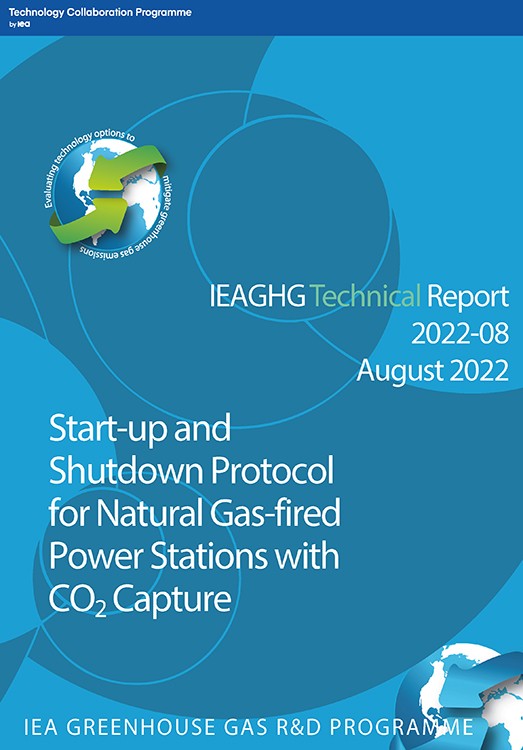2. Start-up and Shutdown Protocol for Natural Gas-fired Power Stations with CO2 Capture (2022)
In modern power grids, a power plant with CO2 capture will be required to operate as a low-carbon, flexible, dispatchable power generator. With increased penetration of intermittent renewables, greater load-following is likely and a rise in the frequency of start-up/shutdown cycles would be expected. If it transpired that frequent start-up/shutdown cycles resulted in appreciable CO2 emissions, it could undermine the value proposition of including modern, flexible, dispatchable fossil fuel power generation assets in the grid even though CCUS applied to them could enhance energy security and grid resilience.
As limited work to-date has focused on the impact of start-up and shutdown of CO2 capture plants, this study serves to broaden understanding of the dynamics of these processes, identifying key factors that impact CO2 capture performance and operability. Factors shown to be important include the solvent inventory volume, the initial start-up temperature (cold vs hot) and the timing of steam availability.

Using a larger solvent inventory can be beneficial in terms of maximising the cumulative CO2 capture rate from start-up, through steady state operation and shutdown, particularly in the case of cold start-ups. Overall, hot start-ups showed a significantly higher cumulative CO2 capture rate and lower specific reboiler duty compared to cold start-ups. The ability to sustain high CO2 capture rates depends on the volume of the solvent inventory, the amine concentration, the starting solvent CO2 loading, and the timing of steam supply to the reboiler.
Results demonstrated that, during start-up, any delay in steam supply to the capture plant significantly reduces the cumulative CO2 capture rate, thereby greatly increasing the residual CO2 emissions. Start-up with preheating was shown to be a potentially valuable approach. During hot start-up, measures such as high preheating and lower solvent loading, were shown to markedly improve capture performance.
In the context of a net-zero energy system, the need for operational flexibility will rise. Hence, the ability to maximise the CO2 capture rate during start-up and shutdown will be highly valuable as it reduces residual CO2 emissions from power plants, thus easing the need for carbon offsets from CO2 removal technologies, e.g., bioenergy with CCS, or direct air capture.
To request a copy of the report, please email tom.billcliff@ieaghg.org with the report reference number (2022-08).
